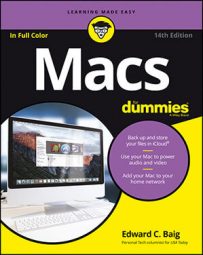For all their differences, the Mac and Windows are more alike than you may initially grasp. And common ground is a good thing, because
- Macs and Windows PCs can share printers, scanners, digital cameras, mice, keyboards, and other peripherals.
- Both systems are fluent in common file types, including PDFs, JPEGs, and text.
- Microsoft produces versions of Office for both platforms, so you can work in programs such as Word, Excel, and PowerPoint with little difficulty. The Mac and Windows versions of Office have used the same files since Office 97 for Windows came onto the scene.
- The Mac can read most Windows PC–formatted CDs and DVDs.
- Both sides can easily communicate by email or by instant-messaging services.
- You can access an iCloud account from a Windows PC.
- iTunes works on both systems. So do versions of QuickTime Player and other software.
- The two systems can be on the same wired or wireless network and share files.
- And for several years now, Intel processors have been inside both computers.

